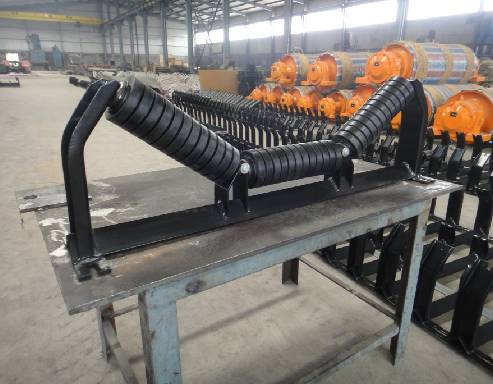 Afrikaans
Afrikaans  Albanian
Albanian  Amharic
Amharic  Arabic
Arabic  Armenian
Armenian  Azerbaijani
Azerbaijani  Basque
Basque  Belarusian
Belarusian  Bengali
Bengali  Bosnian
Bosnian  Bulgarian
Bulgarian  Catalan
Catalan  Cebuano
Cebuano  Corsican
Corsican  Croatian
Croatian  Czech
Czech  Danish
Danish  Dutch
Dutch  English
English  Esperanto
Esperanto  Estonian
Estonian  Finnish
Finnish  French
French  Frisian
Frisian  Galician
Galician  Georgian
Georgian  German
German  Greek
Greek  Gujarati
Gujarati  Haitian Creole
Haitian Creole  hausa
hausa  hawaiian
hawaiian  Hebrew
Hebrew  Hindi
Hindi  Miao
Miao  Hungarian
Hungarian  Icelandic
Icelandic  igbo
igbo  Indonesian
Indonesian  irish
irish  Italian
Italian  Japanese
Japanese  Javanese
Javanese  Kannada
Kannada  kazakh
kazakh  Khmer
Khmer  Rwandese
Rwandese  Korean
Korean  Kurdish
Kurdish  Kyrgyz
Kyrgyz  Lao
Lao  Latin
Latin  Latvian
Latvian  Lithuanian
Lithuanian  Luxembourgish
Luxembourgish  Macedonian
Macedonian  Malgashi
Malgashi  Malay
Malay  Malayalam
Malayalam  Maltese
Maltese  Maori
Maori  Marathi
Marathi  Mongolian
Mongolian  Myanmar
Myanmar  Nepali
Nepali  Norwegian
Norwegian  Norwegian
Norwegian  Occitan
Occitan  Pashto
Pashto  Persian
Persian  Polish
Polish  Portuguese
Portuguese  Punjabi
Punjabi  Romanian
Romanian  Russian
Russian  Samoan
Samoan  Scottish Gaelic
Scottish Gaelic  Serbian
Serbian  Sesotho
Sesotho  Shona
Shona  Sindhi
Sindhi  Sinhala
Sinhala  Slovak
Slovak  Slovenian
Slovenian  Somali
Somali  Spanish
Spanish  Sundanese
Sundanese  Swahili
Swahili  Swedish
Swedish  Tagalog
Tagalog  Tajik
Tajik  Tamil
Tamil  Tatar
Tatar  Telugu
Telugu  Thai
Thai  Turkish
Turkish  Turkmen
Turkmen  Ukrainian
Ukrainian  Urdu
Urdu  Uighur
Uighur  Uzbek
Uzbek  Vietnamese
Vietnamese  Welsh
Welsh  Bantu
Bantu  Yiddish
Yiddish  Yoruba
Yoruba  Zulu
Zulu types of take up pulley
Understanding the Different Types of Take-Up Pulleys
Take-up pulleys are essential components in various mechanical systems, especially in industries that utilize conveyor belts, mining operations, and material handling systems. Their primary purpose is to manage belt tension, ensuring smooth operation and prolonging the life of the belt. This article explores the different types of take-up pulleys and their applications.
1. Fixed Take-Up Pulleys
Fixed take-up pulleys are permanently installed at a specific location along the conveyor or transmission system. They provide a constant tension to the belt but do not allow for any adjustment once in place. These pulleys are often used in systems where the belt does not require frequent tension updates, such as in some types of packaging or assembly operations. While they are less flexible, they can be cost-effective for projects with predictable wear and minimal belt stretch.
2. Adjustable Take-Up Pulleys
Adjustable take-up pulleys offer the advantage of being able to modify tension as needed. These pulleys are usually mounted on a track that allows operators to slide the pulley into different positions. This adjustability is crucial in environments where belt stretching is anticipated, as it helps maintain the efficiency of the system. Adjustable take-up pulleys are commonly found in mining, manufacturing, and agricultural applications.
types of take up pulley

Gravity take-up pulleys utilize the force of gravity to maintain tension in the belt. In this design, a weight acting via a pulley system is suspended above the conveyor or belt assembly. As the belt stretches or elongates during operation, the weight descends, thereby maintaining constant tension. This type of take-up is advantageous as it requires no external power source and can automatically adjust to changes in belt length, making it a popular choice for long conveyor systems.
4. Spring Take-Up Pulleys
Spring take-up pulleys employ tension springs to maintain belt tension. These pulleys consist of a fixed base, a movable pulley, and a spring that connects the two. As the belt stretches or shortens, the spring either extends or compresses to maintain the necessary tension. This system allows for quick adjustments and is particularly well-suited for applications involving variable loads, such as in bulk material handling.
5. Take-Up Winches
Take-up winches represent a more complex solution for maintaining tension in a belt. These systems feature a motor-driven winch capable of taking up or releasing belt length as needed. Take-up winches are ideal for large-scale industrial applications where precise tension control is necessary to avoid belt slippage or excessive wear. They provide an automated solution for dynamic environments with fluctuating material loads.
Conclusion
Understanding the various types of take-up pulleys is crucial for selecting the right system for specific applications. Each type offers distinct advantages and is suited to different operational needs within mechanical systems. By choosing the appropriate take-up pulley, industries can enhance the efficiency and longevity of their conveyor systems, ultimately improving productivity and reducing maintenance costs.
-
Revolutionizing Conveyor Reliability with Advanced Rubber Lagging PulleysNewsJul.22,2025
-
Powering Precision and Durability with Expert Manufacturers of Conveyor ComponentsNewsJul.22,2025
-
Optimizing Conveyor Systems with Advanced Conveyor AccessoriesNewsJul.22,2025
-
Maximize Conveyor Efficiency with Quality Conveyor Idler PulleysNewsJul.22,2025
-
Future-Proof Your Conveyor System with High-Performance Polyurethane RollerNewsJul.22,2025
-
Driving Efficiency Forward with Quality Idlers and RollersNewsJul.22,2025





























